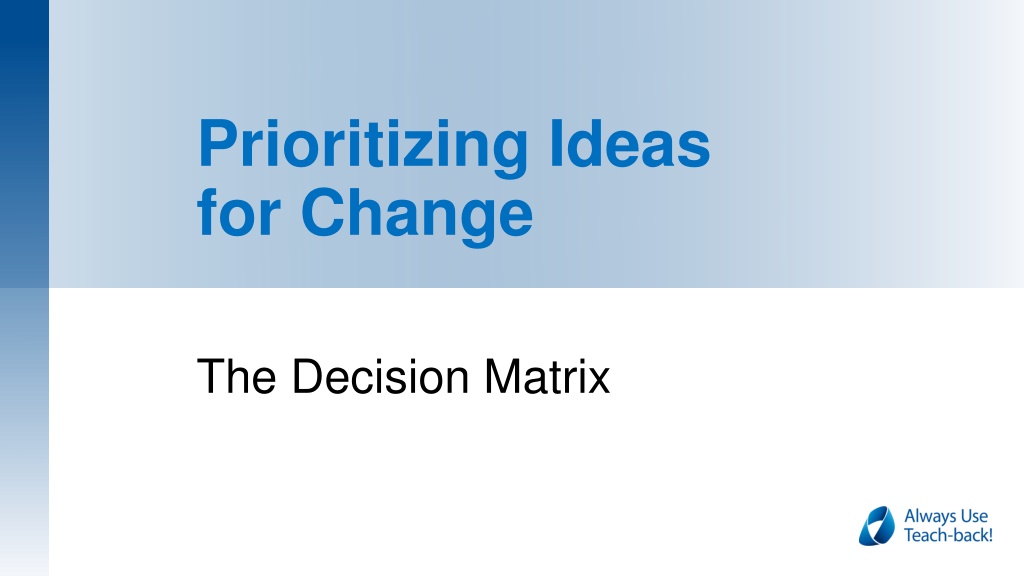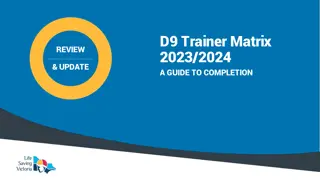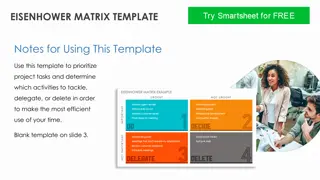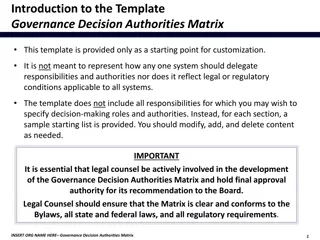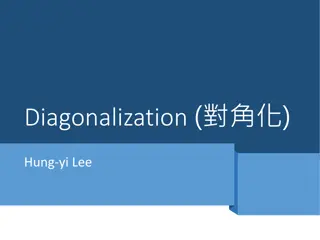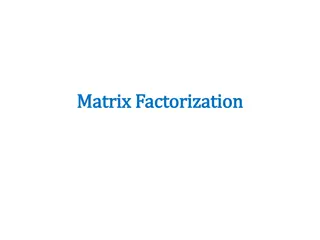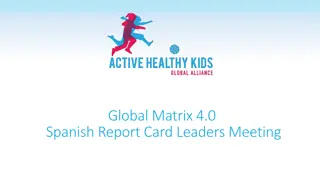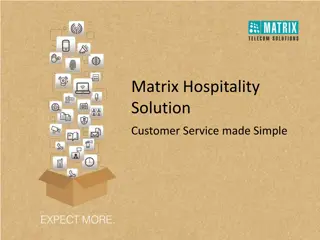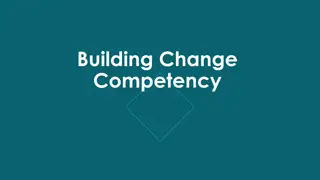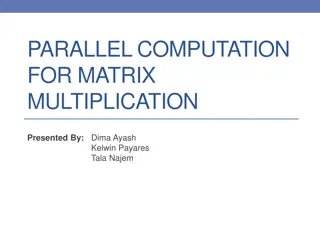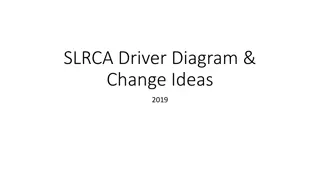Prioritizing Ideas for Change: Decision Matrix
Tips for prioritizing ideas for change using a decision matrix and templates. Learn how to sort ideas based on implementation difficulty, belief in effectiveness, and stakeholder input. Explore examples such as after-school program priorities and implementing teach-back techniques.
Download Presentation

Please find below an Image/Link to download the presentation.
The content on the website is provided AS IS for your information and personal use only. It may not be sold, licensed, or shared on other websites without obtaining consent from the author.If you encounter any issues during the download, it is possible that the publisher has removed the file from their server.
You are allowed to download the files provided on this website for personal or commercial use, subject to the condition that they are used lawfully. All files are the property of their respective owners.
The content on the website is provided AS IS for your information and personal use only. It may not be sold, licensed, or shared on other websites without obtaining consent from the author.
E N D
Presentation Transcript
Prioritizing Ideas for Change The Decision Matrix
Making the best changes requires input from stakeholders and prioritization Often, many ideas surface and need to be prioritized. Tips for prioritizing included in these slides: - A Decision Matrix and blank template - Examples: o After School Program start-up priorities for health literacy o Where to start using teach-back o Finding time for teach-back what to stop doing See notes below slides for additional tips.
Decision Matrix for Change Ideas Sorting out where to start Patient/Client safety supersedes all. Easy to Implement Start with easy ideas to build confidence and will. Place ideas in matrix. Strive for easy, low-cost solutions. High belief it will help Low belief it will help Later work in other quadrants as belief increases or solutions or resources emerge. Difficult to Implement
Decision Matrix for Change Ideas Sorting out where to start Easy to Implement High belief it will help Low belief it will help Difficult to Implement
Decision Matrix After School Program: Phase 1 - Use of the 10 Attributes of HLOs* Easy to Implement 1. Leadership 9. HL for High Risk 4. Include Clients 6. Communication High belief it will help Low belief it will help 2. HL in Plan, Eval, Measures, Safety, Quality 7. Easy Access 3. HL Workforce 5. Equity HL Skills 10. Health Plans 8. Print, Audiovisuals Difficult to Implement *Health Literate Organizations https://nam.edu/perspectives-2012-ten-attributes-of-health-literate-health-care-organizations/
Decision Matrix Implementing teach-back: Where to start? Easy to Implement Leadership Commitment Engage patients Willing Pilot Unit 2nd Willing Pilot Unit Print Materials TB Heart Failure High belief it will help Low belief it will help Reducing Falls & Injuries Videos TB Asthma EHR Documentation TB Diabetes Staff Training Difficult to Implement
Decision Matrix Making time for teach-back: Tasks that might be discontinued Easy to Implement Newsletter or bullet points for review pre-/post-meeting; use meetings for discussion Attend fewer meetings sort criticality & time frame Buddy system with another manager for time Shorten staff meetings High belief it will help Low belief it will help Calling in extra staff when needed move to nursing services office Scheduling staff move to nursing services office Implement SBAR for incoming calls to reduce research time Difficult to Implement
Engaging People in Testing Changes Shopping Ideas You can try this in only 15-20 minutes! When multiple ideas for testing changes emerge: Make a list; quickly go ask as many people as possible: - Which idea shall we test first? Why that one first? - Why not one of the other ideas first? - Any of the ideas you are worried about? Why? Let everyone know their input is valued; multiple ideas can be tested; if a favorite isn t tested first, it will likely be tested later. Quickly learn important details to apply to tests of change.
